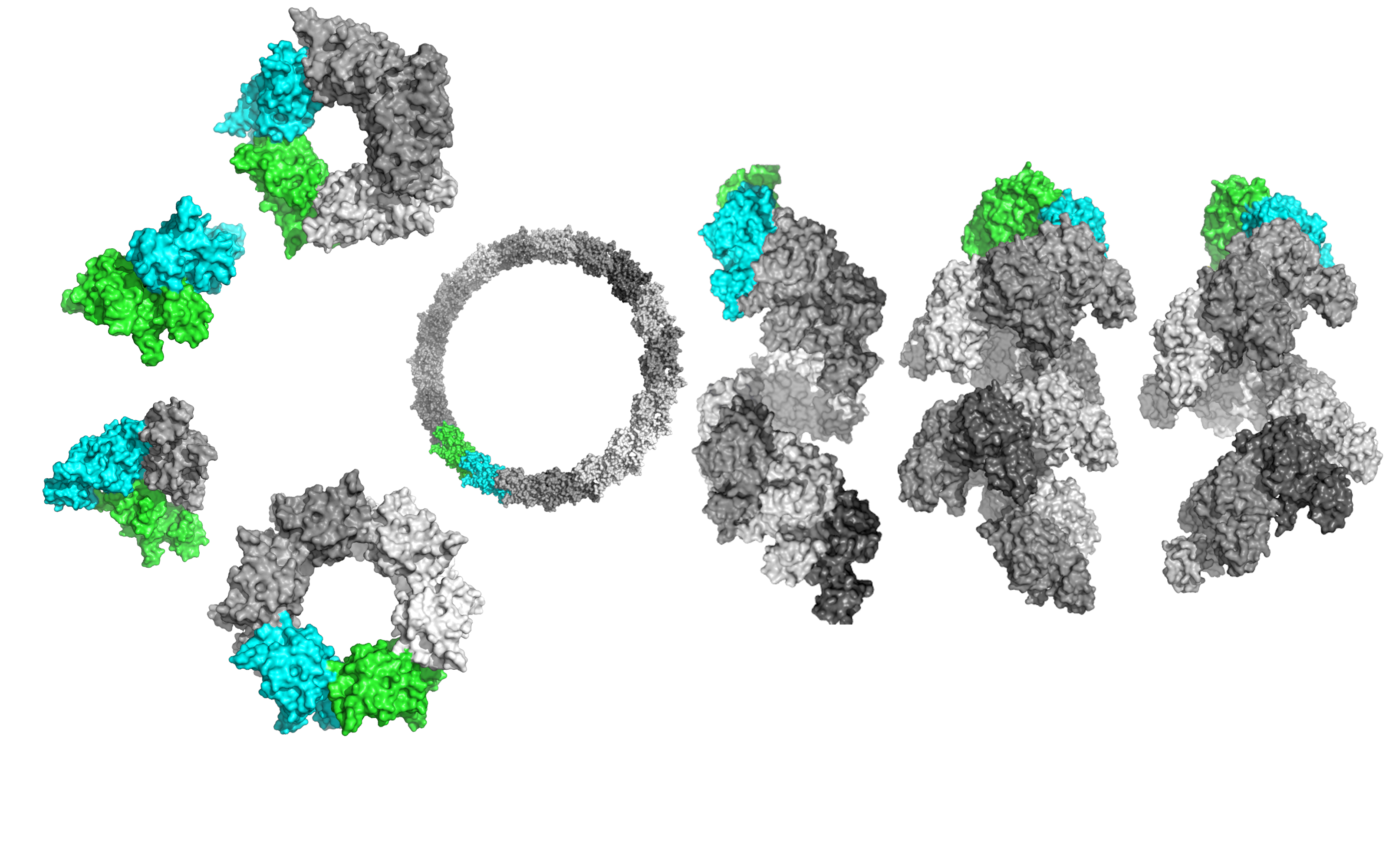Welcome to Heligeom Webserver
Relating interfaces with 3D architectures
About
Heligeom aims at characterizing, manipulating and assembling structural units with a screw organization, and in which the structural units may be individual proteins or protein hetero-multimers.
Heligeom relies on the structures of monomer-monomer interfaces both for deriving the transformations and for filament construction.

Screw organization
A regularly organized oligomer is uniquely defined by the geometry of interaction between
neighboring subunits (where the subunit can be a peptide, a protein or a protein assembly).
A regular oligomeric assembly necessarily follows a screw organization : it can form either a helix
(rotation around an axis coupled to a translation along this axis), a ring or a straight assembly
along the axis.
The helix is the general case, it is characterized by helical parameters such as the pitch, the
number of monomers per turn and the handedness. A cyclic oligomer is a special case of screw
assembly, where the pitch is null. The straight assembly is a special case of screw assembly,
where the rotation around the axis is null.
An interface geometry between subunits uniquely defines a 3D organization in terms of pitch and
number of monomers per turn. The contrary is not necessarily true.

Interfaces
A binding geometry can be characterized by a set of pairs of amino-acid in contact across the
interface. Oligomers are considered to participate to a same family in terms of interface if they
share a sufficient ratio of contact pairs.
This ratio is called fNAT (fraction of native contacts) due to
its historical definition in folding studies, but it can be used with profit to characterize the similarity
of alternative interfaces.

References
[1] Boyer B, Ezelin J, Poulain P, Saladin A, Zacharias M, et al. (2015) An Integrative Approach to the Study of Filamentous Oligomeric Assemblies, with Application to RecA. PLOS ONE 10(3): e0116414. https://doi.org/10.1371/journal.pone.0116414